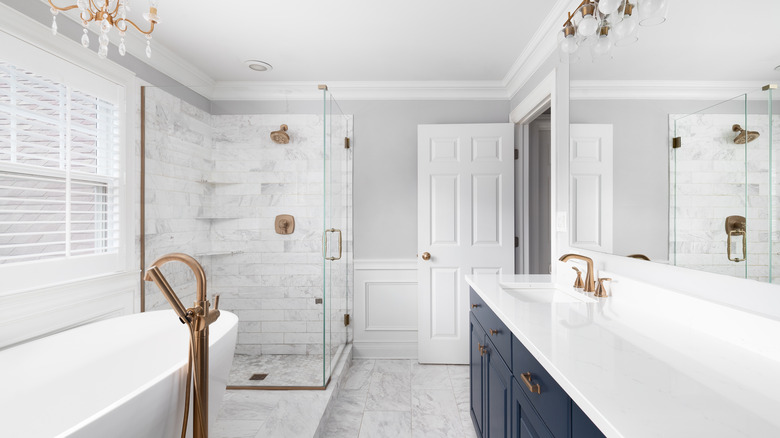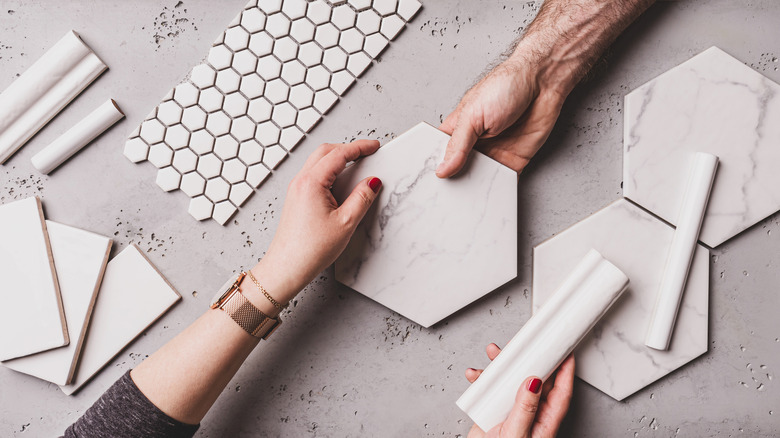One Design Rule To Keep In Mind When Choosing Tile For Your Shower And Bathroom
There are a lot of things to consider when renovating your bathroom. From the flooring to the hardware to the colors, it can quickly become overwhelming. If you want to ensure that you love your bathroom reno without getting a headache from the process, the best thing you can do is try to keep things simple. Tile is one of the hardest parts of a reno, as you are usually using it in multiple places throughout the space. To ensure you don't go overboard with tiling, design experts recommend sticking to three types of tile maximum.
"A good rule of thumb is to use no more than 3 different tiles for bathrooms," says Corey Willis of Hey There Home. "At the least, you'll have bathroom floor tile, and bathroom shower tiles or bathtub wall tile. Then you might have wall tile, and/or accent tile for your bathroom." She recommends finding different tile options to give your space much-needed character, but not to go overboard. She said that "having more than more than 3 tiles for a bathroom will result in a haphazard look." Here's how to ensure you are doing bathroom tile correctly.
Why it's important to follow the rule of three with tiles
One of the biggest parts of a renovation is simply making decisions on seemingly small items, like bathroom tile. When you enter a tile store or browse online, the options are vast, causing homeowners to feel overwhelmed. When it comes to the bathroom, though, you don't have to choose just one tile. So if you fall in love with multiple, that's great — just don't pick more than three. This is because having more than three different tiles is a surefire way to make the space look overcrowded and smaller than it actually is.
The best part about bathroom tile is that it can really transform the space. And having a mix of tile patterns will create a contrast that can open your space and make a statement. Designers say that two or three different tile types is the max, recommending homeowners stick to one style of tile for their floor, one for their walls, and one for a feature or accent wall, if you choose to have one.
How to limit your tile choices to three
When you start to look at tile options, always start with the floor tiles. Once you have settled on a floor tile, use that pattern and color to find a tile that coordinates, but also contrasts the floor tile. Some designers recommend keeping your shower tile and wall tile the same to create a seamless look, while others like to use the shower as a feature wall to create contrast. This is all a matter of opinion, but one thing all designers agree on is that yes, three tile styles is the max but at the same time, you should always be choosing more than one.
In order to make sure all of your tile choices blend nicely, try to stick to one color palette. If you want a light, airy space, you may want to pick colors that lean towards neutral or gray/white. If you are hoping for a moodier space, opt for different shades of blue or a deep green. You also want to pay attention to the patterns and sizes of the tiles. If you love one specific tile, consider using it in two different places, but creating contrast by cutting them into different sizes. Get tile samples and mix and match some ideas until you land on something you love.


